Virtualization Manager - Cluster Details Report
In large virtualized environments characterized by tens of physical servers and hundreds of VMs, manageability is a persistent issue. To ease the pain involved in managing such unwieldy environments, vCenter installations often group physical servers into clusters, and allocate resources to the cluster, instead of to the individual servers. The challenge here for the administrator is to continuously monitor the resource usage by clusters, and accordingly fine-tune allocations. The Cluster Details report that the eG Reporter offers provides this much-needed ‘cluster-focus’.
The report provides you with historical insights into how well a chosen cluster / all clusters on a vCenter are utilizing the available resources. This way, resource-intensive clusters can be accurately identified. Also, by allowing administrators the flexibility to include the performance information related to the physical servers in the cluster, and the virtual machines executing on these physical servers, eG Enterprise enables administrators to zoom into the physical server / virtual machine that could be the root-cause of any resource contention at the cluster-level.
In short, the Cluster Details report, reveals the following:
- How many clusters have been configured on the vCenter? Which ones have been consistently consuming excessive resources?
- Which resource in particular is on demand at the cluster-level?
- Have adequate resources been allocated to the clusters in the first place?
- How many physical servers are included in the cluster? Which ones are they?
- How healthy have the physical servers been over time? Are there frequent complaints of resource shortages with the physical servers? Is this affecting cluster performance?
While this report is typically generated for pre-configured metrics, users can modify the configuration (if need be) by adding more metrics, removing one/more of the existing metrics, or by applying additional functions to the metrics.
To generate the report, do the following:
-
Select the Cluster Details option from the vCenter Reports node of the REPORTS BY FUNCTION tree.

Figure 1 : Selecting the criteria for the Cluster Details report
- When Figure 1 appears, first, indicate the Report Type. For a graphical representation of cluster performance, select the Graph option; for tabulated performance results, select the Data option. By default, the Graph option is chosen.
- From the Report for list, VMware vCenter is chosen by default, indicating that the resulting report focuses on the performance of the clusters managed by vCenter.
-
Then, select a criterion for analysis from the Analyze by list box. Using this report, you can analyze the status of clusters managed by independent vCenter servers or those that are part of a segment, service, or a zone. The options provided by the Analyze by list box are discussed hereunder:
- Component:Select this option to choose the vCenter servers of interest to you from across all the managed vCenter servers in the environment. All managed vCenter servers will then populate the Component list. From this list, pick the vCenter servers for which the report is to be generated. If the Component list consists of too many components, then viewing all the components and selecting the ones you need for report generation could require endless scrolling. To avoid this, you can click the
 button next to the Component list. TheCOMPONENTS pop up window will then appear using which you can view almost all the components in a single interface and Select the ones for which the report is to be generated.
button next to the Component list. TheCOMPONENTS pop up window will then appear using which you can view almost all the components in a single interface and Select the ones for which the report is to be generated.
- Service: Select this option to generate this report for all vCenter servers that are involved in the delivery of a business service. Then, select a Service.
- Segment: Choose this option if the clusters to be evaluated are configured on vCenter servers that are part of a segment. Then, pick a Segment for analysis.
- Zone: Pick this option for a report on the status of clusters managed on all vCenter servers that are included in a zone. Then, choose a Zone. Also, indicate whether the vCenter servers present within the sub-zones of the chosen zone are also to be to be considered for report generation, by selecting an option from the Include subzone list.
- Component:Select this option to choose the vCenter servers of interest to you from across all the managed vCenter servers in the environment. All managed vCenter servers will then populate the Component list. From this list, pick the vCenter servers for which the report is to be generated. If the Component list consists of too many components, then viewing all the components and selecting the ones you need for report generation could require endless scrolling. To avoid this, you can click the
- Then, from the Measures list pick the measure for which the report is to be generated.
-
Then, specify the Timeline for the graph. You can either provide a fixed time line such as 1 hour, 2 days, etc., or select the Any option from the list to provide a From and To date/time for report generation.
Note:
For every user registered with the eG Enterprise system, the administrator can indicate the maximum timeline for which that user can generate a report. Once the maximum timeline is set for a user, then, whenever that user logs into eG Reporter and attempts to generate a report, the Timeline list box in the report page will display options according to the maximum timeline setting of that user. For instance, if a user can generate a report for a maximum period of 3 days only, then 3 days will be the highest option displayed in the Timeline list - i.e., 3 days will be the last option in the fixed Timeline list. Similarly, if the user chooses the Any option from the Timeline list and proceeds to provide a start date and end date for report generation using the From and To specifications, eG Enterprise will first check if the user's Timeline specification conforms to his/her maximum timeline setting. If not, report generation will fail. For instance, for a user who is allowed to generate reports spanning over a maximum period of 3 days only, the difference between the From and To dates should never be over 3 days. If it is, then, upon clicking the Run Report button a message box will appear, prompting the user to change the From and To specification.
-
In addition to the settings discussed above, this report comes with a set of default specifications. These settings are hidden by default. If you do not want to disturb these default settings, then you can proceed to generate the report by clicking the Run Report button soon after you pick a Measure. However, if you want to view and then alter these settings (if required), click on the
 button. The default settings will then appear in the MORE OPTIONS drop down window (see Figure 2). The steps below discuss each of these settings and how they can be customized.
button. The default settings will then appear in the MORE OPTIONS drop down window (see Figure 2). The steps below discuss each of these settings and how they can be customized.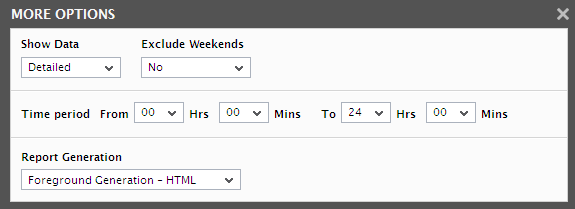
Figure 2 : The default settings for generating a Cluster Details report
-
The speed with which a report is generated depends primarily on the report Timeline. While a Timeline that varies between a couple of days to a week enables the eG Enterprise system to quickly retrieve the required data, timelines that span multiple weeks/months could slow-down the data retrieval and report generation process to a considerable extent, owing to the volume of data involved. In order to ensure quick and easy access to reports, eG Enterprise provides you the option of enabling data retrieval from the Trend information in the database, instead of the Detailed test information that is used by default for report generation. The Detailed test information based comprises of multiple measurement records for a test - one or more each for every test execution. Whereas, the Trend information includes only hourly, daily, and monthly summary computations for a test performed on a continuous basis. For instance, during a period of 1 hour, a test that runs every 5 minutes inserts atleast 12 records into the Detailed test information base. On the other hand, the Trend information base would consist of only 1 record for the same 1 hour period. Fewer the number of records, query execution becomes much quicker, and data retrieval faster. To use the trend data for report generation, you will have to select the Trend option from the Show Data field in Figure 2. By default, the Detailed option is selected in Figure 2 indicating that the report data is retrieved from the detailed test information in the database. If need be, you can also ensure that all reports always use the Detailed test tables alone by hiding the Show Data field from the reporter interface. To achieve this, do the following:
- Login to the eG administrative interface as 'admin'.
- Select the Manager option from the Settings tile that appears when the
 button against the Admin tab is clicked.
button against the Admin tab is clicked. -
From the GENERAL SETTINGS page that then appears, if you set the Compute average/sum of metrics while trending flag to No, then the Show Data field will not appear in the reporter interface; this denies users access to the Trend option, and thus ensures that reports are always generated using the Detailed tables.
Note:
- A Trend report will not include the data for the current day since trend data is only computed at the end of the day.
- If the Trend option is chosen, the time period of the report should be greater than 1 day.
-
The usage of Detailed test tables for generating reports, especially those that span weeks, increases the stress on the eG database, thus resulting in undue delays in report generation. In order to ensure that the database is not choked by such voluminous data requests, you can configure eG Enterprise to automatically "force" the use of the Trend option if the Timeline of a report exceeds a pre-configured duration. To specify this time boundary, do the following:
- Edit the eg_report.ini file in the <EG_INSTALL_DIR>\manager\config directory.
- In the [MISC] section of the file, you will find a DetailedTime parameter.
- Specify the duration (in days) beyond which Detailed reports cannot be generated, against the DetailedTime parameter, and save the eg_report.ini file.
- For instance, to make sure that Detailed reports are disallowed for a Timeline of over 2 weeks, set the DetailedTime parameter to 14 and save the file.
- Say, subsequently, you attempt to generate a Detailed report for a FixedTimeline of 3 weeks (which is greater than the 14-day limit set in our example). The instant you select the 3 weeks option from the Fixed list box, the Detailed option gets automatically disabled, and the Trend option gets enabled. Similarly, if you specify an AnyTimeline that runs over 14 days, then, upon clicking the Run Report button to generate the report, a message box appears (see Figure 8) informing you that only the Trend option is permitted.
- To proceed with the Trend report generation, click the ok button in the message box. To terminate Trend report generation, click the Cancel button.
-
If the timeline specified for the report needs to exclude the data collected during the Weekends, then set Exclude weekends to Yes. If not, select No.
Note:
By default, the weekend constitutes Saturday and Sunday. To override this default setting, do the following:
- Edit the eg_report.ini file in the <eg_install_dir>\manager\config directory.
- In the [virtual_cluster] section of the file, the exclude_weekendparameter is set to Saturday,Sunday by default. You can modify this by setting the exclude_weekend parameter to a comma-separated list of other days of the week - say Friday,Saturday.
- Save the file after making the required changes.
- Next, indicate the report Timeperiod.
-
In large environments, reports generated using months of data can take a long time to complete. Administrators now have the option of generating reports on-line or in the background. When a report is scheduled for background generation, administrators can proceed with their other monitoring, diagnosis, and reporting tasks, while the eG manager is processing the report. This saves the administrator valuable time. To schedule background processing of a report, you can either select the Background Save - PDF option or the Background Save - CSV option from the Report Generation list. In this case, a Report Name text box will appear, where you would have to provide the name with which the report is to be saved in the background. To process reports in the foreground, select the Foreground Generation - HTML option from this list.
Note:
- The Report Generation list will appear only if the EnableBackgroundReport flag in the [BACKGROUND_PROCESS] section of the eg_report.ini file (in the {EG_INSTALL_DIR}\manager\config directory) is set to Yes.
- The default selection in the Report Generation list will change according to the Timeline specified for the report. If the Timeline set is greater than or equal to the number of days specified against the MinDurationForReport parameter in the [BACKGROUND_PROCESS] section of the eg_report.ini file, then the default selection in the Report Generation list will be Background Save - PDF. On the other hand, if the Timeline set for the report is lesser than the value of the MinDurationForReport parameter, then the default selection in the Report Generation list will be Foreground. This is because, the MinDurationForReport setting governs when reports are to be processed in the background. By default, this parameter is set to 2 weeks - this indicates that by default, reports with a timeline of 2 weeks and above will be processed in the background.
-
Finally, click the Run Report button.
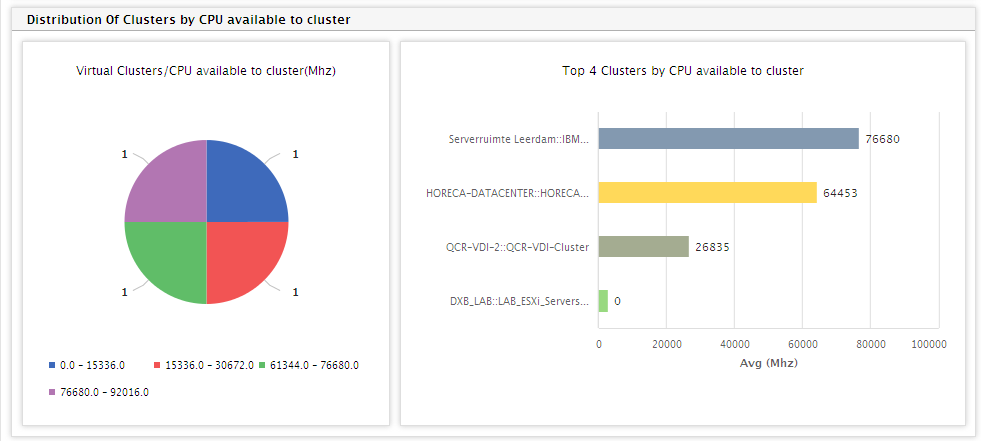
-
If the Report Type is Graph and the option chosen from the Report Generation list is Foreground Generation - HTML, then, clicking on the Run Report button will invoke Figure 3, which will reveal the following:
-
A distribution pie chart that reveals the number of clusters in different distribution ranges (see Figure 3). The distribution ranges are obtained by applying the first of the configured functions on the chosen Measure. For instance, assume that Physical CPU available to cluster is the chosen Measure. Say that you have configured to display the Avg and Max of this measure in a Data report. Typically, both these configured values will appear only in the Data report. In the case of a Graph report however, the first of the two functions - i.e., Avg of Physical CPU available to cluster - alone is calculated for every vC cluster managed by each vCenter chosen from the Components list. The resulting pie chart enables administrators to deduce, at a glance, whether the clusters managed by chosen vCenter servers are adequately sized or not. Clicking on a particular slice in the pie chart lists the clusters that fall within the value range represented by that slice (see Figure 4). Against every cluster, the actual values for each of the configured functions (both Avg and Max, in our example) will be displayed. A zone/component-type-level Summary of the chosen Measure will also be available.
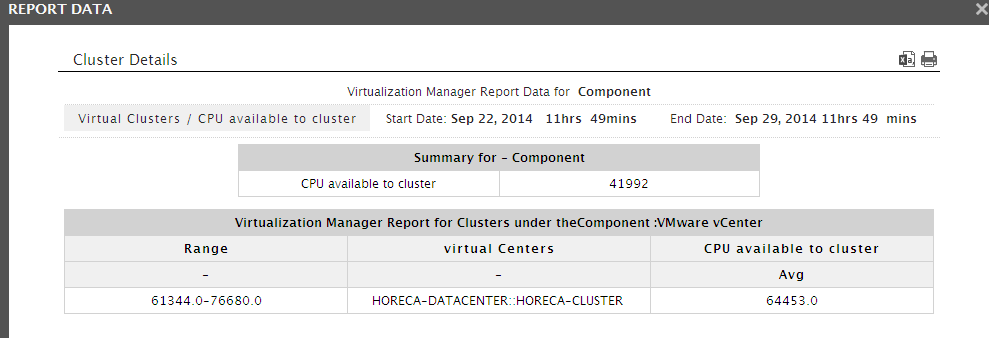
Figure 4 : A list of vCenters and the number of ESX servers each one manages
Note:
By default, the chart type for distribution is a pie chart. However, you can have a bar graph depict the same data instead of a pie chart, by following the steps given below:
- Edit the eg_report.ini file in the <eg_install_dir>\manager\config directory.
- Change the value of the chartTypeForDist parameter in the [virtual_center] section of this file from the default Pie, to Bar.
- Save the eg_report.ini file.
By default, the number of value ranges that need to be configured for the distribution chart is 10. To override this default setting, do the following:
- Edit the eg_report.ini file in the <EG_INSTALL_DIR>\manager\config directory.
- Specify a number of your choice against the nofRangeForDist parameter in the [virtual_center] section of this file. By default, this parameter will hold the value 10.
- Save the eg_report.ini file.
-
Adjacent to the pie chart, you will find a bar chart that indicates the clusters that have topped/failed in a selected performance realm (i.e., the Measure) during the specified timeline. For example, for the Physical CPU available to cluster measure, this bar chart will help you quickly isolate those clusters that are and are not adequately sized in terms of CPU resources. Like the pie chart, the values for the bar chart are also calculated by applying the first of the configured functions on the chosen Measure.
Note:
You can configure the colors to be used in the distribution chart and the Top <N> Components bar chart in the zone report, by editing the eg_report.ini file in the <eg_install_dir>\manager\config directory. The [VIRTUAL_center] section of the file defines the 20 default colors of the distribution and bar charts:
[VIRTUAL_GUEST]
ChartColor=#8399b0,#ffd95a,#a4ac91,#98d980,#d5b996,#f48848,#8b8cc2,
#eb4052,#c4b3d0,#b18651,#ebb7ce,#028768,#f5c372,#887c65,#e4c536,
#b5582c,#f94989,#770d72,#97a067,#89aeb7distColor=#115fa6,#f25454,#60bd68,#b276b2,#81bef7,#a61120,#ffd13e,
#770d72,#887c65,#a4ac91
You override the default color settings of the distribution chart by modifying the color-codes specifying against distColor. For changing the colors used by the Top <N> Components chart, alter the codes listed against the ChartColor parameter.
Note:
The number of components to be displayed in the Top <N> Components bar chart is configurable. To specify the number, do the following:
- Edit the eg_report.ini file in the <EG_INSTALL_DIR>\manager\config directory.
- Specify a number of your choice against the NoOfServersforChart parameter in the [virtual_center] section of the file. By default, the value displayed here is 10, indicating that, by default, the bar chart will be for the Top 10 Components. For example, if you change this value to 5, then a bar chart displaying the Top 5 Components will appear.
- Finally, save the eg_report.ini file.
-
-
If Data is chosen as the Report Type, then, an Include Stats for section will additionally appear, from which you can pick what you want to view in your Data report. To perform a quick comparison of the resource availability and usage across clusters managed by the chosen vCenter servers, click on the vmClusters check box. Assuming that Foreground Generation - html is still the option chosen from the Report Generation list, clicking on the Run Report button will invoke Figure 5.

Figure 5 : The Data report comparing the resource usage across clusters
-
For every cluster managed by each chosen vCenter server, the report will display a set of pre-configured resource availability and resource usage metrics, with the help of which you can quickly isolate resource-intensive clusters. Clicking on a cluster, say the most CPU-intensive cluster, here will lead you to Figure 6 that will allow you to zoom into the performance of the resource pools in that cluster, so that you can analyze whether the excessive resource usage by one or more resource pools contributed to the resource contention at the cluster-level.
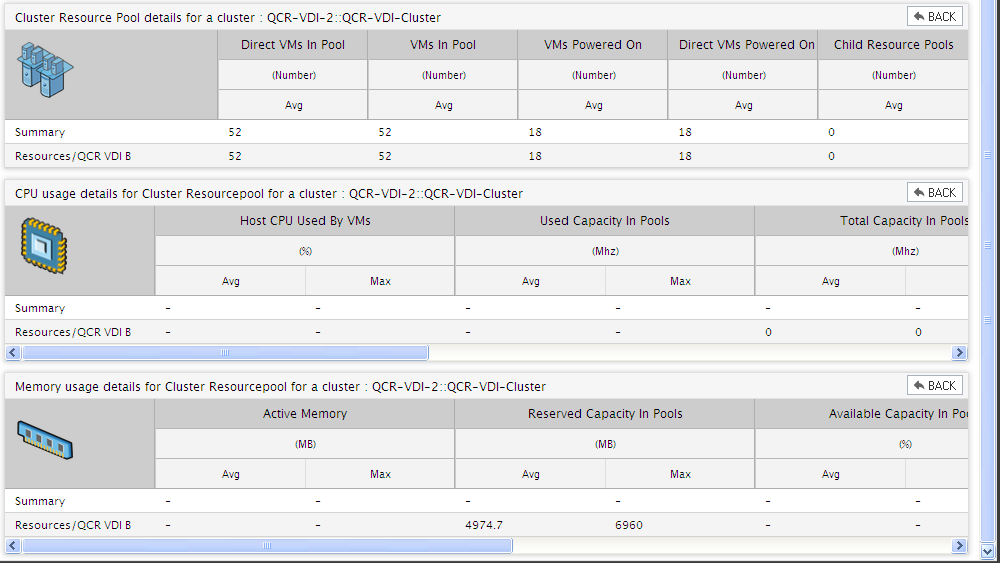
Figure 6 : The Resource Pools report that appears when a cluster is clicked on
-
On the other hand, if you choose the Physical Servers option from the Include Stats for section, then, clicking on the Run Report button will invoke Figure 7.

Figure 7 : The Physical Servers report that appears when the 'Physical Servers' option is chosen from 'Include Stats for'
-
Using the report in Figure 7, you can precisely point your finger at that physical server in a cluster that is responsible for draining the physical resources available to the cluster. Clicking on a physical server here will lead you to Figure 8.
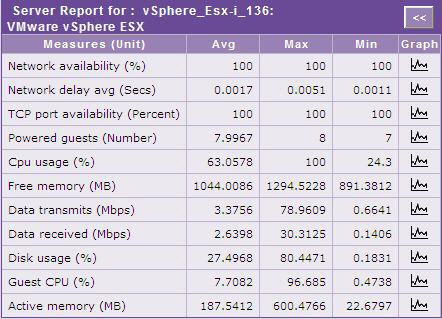
Figure 8 : The server report that appears when the Physical Server in a Physical Servers report is clicked
- On the other hand, if the Background Save - PDF option is chosen from the Report Generation list, then clicking on the Run Report button will not generate the report and display it in this page for your benefit. Instead, a message indicating that the report is being processed in the background will appear. This will be accompanied by a link that will lead you to the page that lists all the reports that are being processed in the background, and their current status. If background report generation fails for a report, you can regenerate that report using this page, or can even delete that report if need be. On the other hand, if background processing successfully completes for your report, then, you can view a PDF of the report by clicking on the
 icon in that page.
icon in that page.
